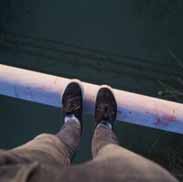Macro 10 Final – Flashcards
Unlock all answers in this set
Unlock answersquestion
Which of the following is considered investment spending in macroeconomics?
answer
GM builds a new plant to manufacture automobiles.
question
Private savings is equal to:
answer
income less consumption.
question
Use the following to answer questions 3-5: Use this scenario to answer questions 9-12. Scenario: Closed Economy S = I In a closed economy suppose that GDP is $12 trillion. Consumption is $8 trillion and government spending is $2 trillion. Taxes are $0.5 trillion. (Scenario: Closed Economy S = I) How much is private saving?
answer
$3.5 trillion
question
(Scenario: Closed Economy S = I) What is the government budget balance?
answer
a deficit of $1.5 trillion
question
(Scenario: Closed Economy S = I) How much is national saving?
answer
$2 trillion
question
National savings is the sum of private savings and:
answer
the budget balance.
question
Use the following to answer questions 7-9: Use this scenario to answer questions 32-36. Scenario: Open Economy S = I In an open economy suppose that GDP is $12 trillion. Consumption is $8 trillion and government spending is $2 trillion. Taxes are $0.5 trillion. Exports are $1 trillion and imports are $3 trillion. (Scenario: Open Economy S = I) How much is private saving?
answer
$3.5 trillion
question
(Scenario: Open Economy S = I) How much is the net capital inflow?
answer
$2 trillion
question
(Scenario: Open Economy S = I) How much is investment spending?
answer
$4 trillion
question
Net capital inflows equal:
answer
imports minus exports.
question
In the open economy of Sildavia, government spending during 2005 was $30 billion, consumption was $70 billion, taxes were $20 billion, and GDP was $100 billion. If investment spending in Sildavia during 2005 was $10 billion, we can conclude that Sildavia registered:
answer
a net capital inflow of $10 billion.
question
Use the following to answer questions 12-14: Figure: Loanable Funds Market (Figure: Loanable Funds Market) If the interest rate is 8%, businesses will want to borrow approximately:
answer
$2 trillion.
question
(Figure: Loanable Funds Market) If the interest rate is 8%, people will want to save approximately:
answer
$4 trillion.
question
(Figure: Loanable Funds Market) The equilibrium interest rate and total quantity of lending are:
answer
6% and $3 trillion.
question
Use the following to answer questions 15-17: Figure: Crowding Out (Figure: Crowding Out) The demand for loanable funds curve DLF1 will shift to DLF2, because:
answer
of an increase in the government budget deficit.
question
(Figure: Crowding Out) Suppose the supply of loanable funds curve SLF1 shifts to SLF2, that implies:
answer
that private savings have increased.
question
(Figure: Crowding Out) If the supply of loanable funds curve shifts to the right, then it will result in:
answer
an increase in the total amount of borrowing and a fall in the interest rate.
question
Samantha is asking her employer for a 5% raise for the coming year. If the inflation rate during the next year is 5.5%, then her real wage will:
answer
decrease by .5%.
question
From the standpoint of economic growth, banks are important to:
answer
channel savings into investment.
question
A financial asset is:
answer
a claim that entitles the owner to future income from the seller.
question
A physical asset is:
answer
a claim on a tangible asset that gives the owner the right to dispose of it as he or she wishes.
question
A liability is:
answer
a requirement that you pay income in the future.
question
Transactions costs are:
answer
the expenses of negotiating and executing a deal.
question
A risk averse person:
answer
has an asymmetric view of the value of losses and gains
question
Use the following to answer question 25: Table: Loanable Funds (Table: Loanable Funds) In the accompanying table, at what interest rate will the market for loanable funds be in equilibrium?
answer
5%



